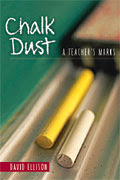In 1987, Florida's Vero Beach High School selected Judy Jones Teacher of the Year. This was unusual since it was only her first year at the school. However, Ms. Jones had agreed to work with the most difficult, unmotivated students; and once her colleagues witnessed those kids' astounding success, they had to acknowledge her achievement with the award. It's a fascinating, important story.
Vero Beach High, as with so many public schools, suffered from a depressing drop-out problem. It had piloted several intervention programs hoping to keep a mere sixty percent of its ``at-risk'' students in school--with dismal results. Even the few who didn't drop out continued to founder in their classes. Worse, they became terrible discipline problems, often preventing others from learning. What was the point in keeping them in class?
Desperate, despairing, Vero Beach finally agreed to try a radical experiment: Computer Education. Pull the worst kids out of their regular classes, sit them in front of a monitor, and see what happened. It was a long shot, but the school and the kids didn't really have anything to lose.
Normally, teachers would have balked at the notion of a machine usurping their role. But in this case they were more than willing to be rid of their troublesome students. Who, though, would be foolish enough to oversee them and the computer program?
Enter Judy Jones. Her new colleagues greeted her warmly, and then shook their heads knowingly when she left for the computer lab. Poor thing! They gave her a few days before....
Nothing happened. It was eerie. The teachers peeked in the lab as they walked nonchalantly by during their prep periods. To their amazement, the kids were on task, engrossed in their work. In June, more than eighty-five percent were still plugging away!
There's more. Surprised at their own success, Ms. Jones' students decided to take the high school equivalency exam (G.E.D.). In a state where only about sixty percent of kids with high school diplomas could pass the challenging test, over eighty-five percent of Ms. Jones' computer-educated at-risk students did. In a matter of months they'd mastered what many students never learn at all. No wonder Ms. Jones became Teacher of the Year!
Nearby districts took notice. Soon over twenty had implemented Computer Education for their at-risk students, all with similarly wonderful results. Perhaps it was because the computer allowed students to learn at their own, individual pace. Or maybe it was its immediate feedback and emphasis on basic skills. Whatever the reason, the computer clearly succeeded where teachers had failed.
Nonetheless, most schools continue to utilize the computer only as a glorified word processor or internet browser. They encourage kids to research and write impressive projects on it. But they cringe at the thought of utilizing it as Vero Beach did to actually tutor or teach.
This is an inexcusable waste of resources. If the computer can be so wildly effective with at-risk high school students, imagine its success with eager grade-schoolers! Why wait until they're on the verge of dropping out?
Once we dare to harness the awesome power of the computer, there will be a lot more teachers as proud as Ms. Jones; and many more kids as successful as her students.
Anyone interested in learning more about Vero Beach and computers in education should read Frederick Bennett's Computers as Tutors, found on the internet: http://www.cris.com/~Faben1/











